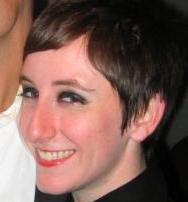
May noted the start of Wikimedian Dominic's Wikipedian-in-Residence at the National Archives and Records Administration. Within days of starting his internship, Dominic had declared to the GLAMWIKI community that NARA had agreed to donate a collection of Ansel Adams photographs; photographs taken by Adams on behalf of the National Park Service in the mid-20th century.
Adams work is known for being one of the most accessible to the public eye - pleasant and monumental images of the parks of the West, often making their ways into calendars and posters in gift shops, allowing purchasers to admire the majestic nature of America at home. This accessibility and availability allows for cultural organizations to milk what they can out of licensing; fearing to release their images into the public domain due, claiming they'll lose major income. Many of us within the GLAM (galleries, libraries, archives and museums) world know that this is rarely a truth; it's like saying you make money off charging admission. Regardless, there are some institutions that can rake in the dough at licensing off images of the Mona Lisa and Van Gogh, despite being out of copyright - just like the Ansel Adams images created for the feds - these are public domain. We own them, the public, so let us have them, right?
Right! So NARA decided to release hi-res versions of a series taken between 1941-1942 featuring major National Parks and images of Indigenous peoples living in the Southwest. Aside from having great images of what he's known best for - nature - Adams also photographed peoples of the Southwest: Navajo and San Ildefonso Pueblo. Just a few images are in the collection, but, they are a refreshing and natural series of examples compared to the stiff pre-planned images of Edward Curtis which litter the cultural world due to their lack of copyright.

I'd love to see a content donation from an Indigenous community - specifically images of people today. While these images are historically beautiful and the people in them as well, the importance of contemporary image donations to free culture will allow for educators to inform the world that people in these communities are flourishing today - and are not stuck in the past of black and white images taken by a government employee. I hope my research and work will allow this to eventually happen, as trust is built and neither side (community and Wikimedia) comprise their belief systems.
View and use the newly donated images here.
Thanks NARA for the donation and Dominic for being the "fastest working Wikipedian-in-Residence" this far!






